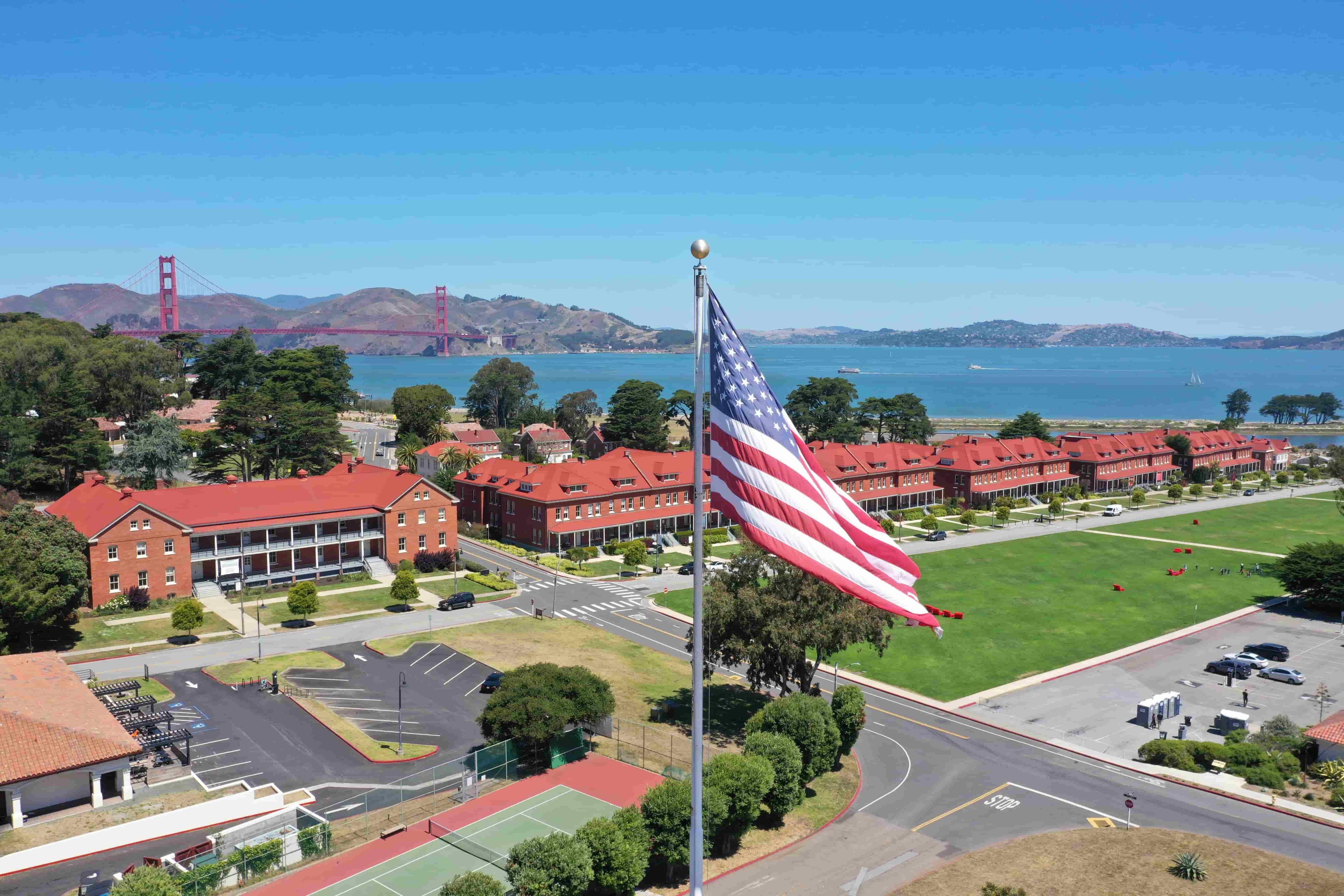Presidio Cavalry Barracks to Ride Again
Presidio of San Francisco (March 9, 2009) — The cavalry played a significant role in the life of the Presidio for more than 150 years, from 1776, when the first horse-mounted soldiers arrived with the Spanish army until the 1940s when the Presidio sold the last of its horses following World War II. In the early part of the century, cavalry soldiers trained at the Presidio before shipping out to fight the war in the Philippines. Later, they would protect the state’s newly created national parks, Yosemite and King’s Canyon.
Home for the cavalry soldiers of the time was a two-story, wood-frame barracks up the hill from the stables. Now, work is beginning on a complete and total rehabilitation of the 107-year old building. The project is expected to be completed by the middle of October.
“It’s a wonderful, rich building with a lot of character,” says Rob Wallace, an architect with the Presidio Trust. “Unlike a lot of buildings that have undergone similar rehabilitations, this building’s pretty much in tact. We’re really taking it back to the 1902 plan.”
Part of that rehabilitation is a living roof that will cover one wing of the building. It’s one of a number of steps the Trust is taking as it pursues the Green Building Council’s Silver Certification for Leadership in Energy and Environmental Design (LEED) for the project.
“We’re modernizing the building, bringing it up to current standards so it’s capable of supporting contemporary uses while at the same time maintaining the historic character of the building,” adds Wallace.
Built in 1902, the Cavalry Barracks is unique among Presidio buildings. Perched on a hillside overlooking Crissy Field, it sits not in a particular neighborhood, but somewhat in isolation, surrounded by woods.
The building’s location makes it suitable for a range of possible uses — everything from office space for either a single or multiple tenants to educational purposes. In fact in the years since the Army left the Presidio, the barracks has served as “swing space” for several San Francisco schools while their permanent buildings were being remodeled or constructed.
The building was the original home of the Presidio’s Bay School. The school’s founding class spent their freshman year there, in 2004, before moving to their permanent campus on the Main Post. The 55 seniors in that first class graduated last June.
“It’s a rather old-fashioned looking building,” says Dr. Randolph Delehanty, the Trust’s historian who has written extensively about architectural history. “It’s a conservative style. It was built at the beginning of the 20th century, but it looks very much like it could have been built 60 years earlier.”
The building’s interior belies its stately, if somewhat staid, exterior. Inside, the barracks features ornate pressed metal ceilings, an unusual system of supporting beams, detailed cast-iron columns, fireplaces with mantels, and the original staircase and railings. All of which are being preserved during the rehabilitation.
One challenge facing Wallace and his team was how to get people into the front of the building. “The building has, and will continue to have, a very prominent facade,” notes Wallace. But circulation patterns around the building changed with the construction of the Golden Gate Bridge in 1938. Gone was the simple foot path that linked the barracks with the stables down the hill. In its place a busy boulevard (Lincoln) was added and expanded, limiting access to the original front doors.
“So we took what was the service entrance,” explains Wallace. “And made it much more inviting and functional so it can be used the everyday entrance to the building.”
The Presidio Trust was established by the United States Congress in 1996 to oversee the Presidio of San Francisco, an urban national park located at the base of the Golden Gate Bridge. The 1,500-acre site contains expansive open space and spectacular views, a 300-acre historic forest, and rare and endangered plants and wildlife. It also comprises nearly 6 million square feet of buildings, including 469 historic structures that contribute to its status as a National Historic Landmark District.
